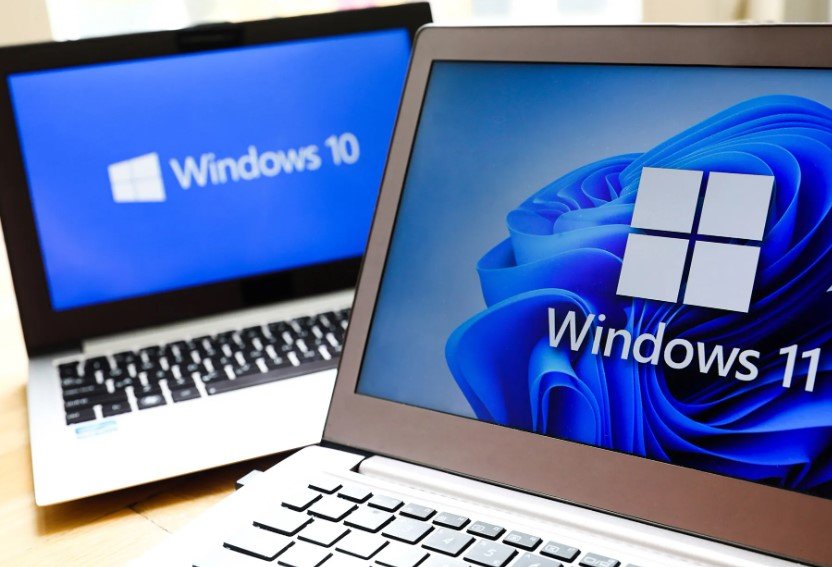A California resident has filed a lawsuit against Microsoft over the tech giant’s plan to end support for Windows 10 on October 14, 2025, when the company will no longer provide free software updates or security fixes. Lawrence Klein, who owns two laptops running Windows 10, claims both devices will become obsolete in October because they cannot meet the hardware requirements needed to upgrade to Windows 11.
The lawsuit represents growing frustration among millions of Windows 10 users who face difficult choices as the support deadline approaches. According to current market share data, Windows 10 still holds 52.94% of all Windows PCs worldwide, while Windows 11 has reached 43.72%, creating a unique situation where nearly half of all Windows users still rely on the soon-to-be-unsupported operating system.
The Heart of the Legal Challenge
Klein is asking a judge to order Microsoft to continue supporting Windows 10 without additional charge, until the number of devices running the older operating system falls below 10% of total Windows users1. The lawsuit argues that Microsoft’s decision to end support while so many users remain on Windows 10 represents an unfair business practice.
Klein asserts that Microsoft is making this move “to force its customers to purchase new devices optimized to run Microsoft’s suite of generative artificial intelligence (AI) software such as Copilot, which comes bundled with Windows 11 by default”. This allegation suggests the company prioritizes AI market expansion over customer needs and environmental concerns.

The timing of the lawsuit is particularly significant, arriving just two months before the October deadline. “With only three months until support ends for Windows 10, it is likely that many millions of users will not buy new devices or pay for extended support Klein stated in his complaint, highlighting the widespread impact this decision could have on individuals and businesses alike.
Hardware Requirements Create Massive Obstacle
The central issue preventing many users from upgrading to Windows 11 lies in its hardware requirements. Some 240 million devices don’t meet the hardware requirements to upgrade to Windows 115, particularly the need for a Trusted Platform Module (TPM) 2.0 chip. The upgrades required for Windows 11 – including TPM 2.0 security, as well as ruling out some surprisingly recent processors – aren’t justified, according to the lawsuit.
This hardware barrier affects perfectly functional computers that could otherwise continue operating for years. Many users find themselves caught between purchasing new devices they don’t need or paying for extended security updates to keep their current machines protected. Consumer advocates have been fighting back on this for some time, as unnecessarily buying new devices is a burden on the environment.
Table: Windows 10 vs Windows 11 Key Differences
| Feature | Windows 10 | Windows 11 |
|---|---|---|
| TPM Requirement | Not required | TPM 2.0 mandatory |
| Processor Support | Broader compatibility | Recent processors only |
| End of Support | October 14, 2025 | Currently supported |
| Market Share | 52.94% | 43.72% |
| AI Integration | Limited | Copilot built-in |
Microsoft’s Extended Support Options
While Microsoft maintains its October 2025 deadline, the company has introduced several options for users who need more time. Microsoft recommends that users enroll in the Windows 10 Consumer Extended Security Updates (ESU) program or replace the device with one that supports Windows.
Microsoft will charge $30 per device for one year of extended security updates (ESU). Microsoft traditionally offers extended updates to businesses and organizations and not to individuals, so that’s a big change this time around. Business users face different pricing, with costs escalating each year of extended support.
Security Implications Beyond October 2025
While you could continue to use a PC running Windows 10, without continued software and security updates, your PC will be at a greater risk for viruses and malware. This security concern extends beyond individual users to businesses storing sensitive customer data.
Many consumer and business customers will soon stop receiving security updates for their Windows systems. Many of these devices store sensitive customer data, putting them at increased risk of cyberattacks and other security incidents. The lawsuit emphasizes that Microsoft is “well aware” of these risks.
However, Microsoft has made some concessions for security. Security intelligence updates will be delivered through October 2028, helping users stay protected from new types of malware and viruses. This means users who rely on Microsoft’s built-in antivirus and productivity apps can continue doing so securely for a while longer.
The AI Factor in Microsoft’s Strategy
Klein’s case against Microsoft includes the assertion that the company is using Windows 10’s end of support and Windows 11 upgrades to persuade people to buy new PCs that major in AI, namely Copilot+ PCs. Microsoft hasn’t helped itself here, openly pushing these Windows 11 devices as the lawsuit points out – and that includes intrusive full-screen advertisements piped to Windows 10 machines.
This aggressive marketing approach has fueled suspicions about Microsoft’s true motivations. The company’s push for AI-enabled hardware coincides with its broader strategy to integrate artificial intelligence across its product ecosystem, raising questions about whether customer needs or corporate ambitions drive the Windows 10 sunset.
What This Means for Windows 10 Users
For the millions still using Windows 10, the lawsuit represents a last-ditch effort to avoid difficult decisions. Users currently face several paths forward:
- Upgrade to Windows 11 (if hardware compatible)
- Purchase a new Windows 11-compatible PC
- Pay for Extended Security Updates
- Continue using Windows 10 without security updates
- Switch to alternative operating systems
As the days go on and fewer people use it, application developers will also stop supporting Windows 10. App devs can support older versions of Windows for as long as they like, but eventually it won’t be worth the effort anymore and they’ll stop.
The lawsuit’s outcome could significantly impact Microsoft’s approach to operating system transitions. Although Klein’s lawsuit raises some valid points, it is unlikely to have any practical impact, as Microsoft’s plans have been public for years. However, the legal challenge highlights growing tension between technology companies’ business models and consumer expectations for long-term product support.
Whether the court sides with Klein or Microsoft, this case underscores a fundamental shift in how operating systems are managed and retired. As Windows 10 approaches its final months of official support, users worldwide must weigh their options carefully, balancing security needs, financial considerations, and environmental impact in an increasingly complex digital landscape.








